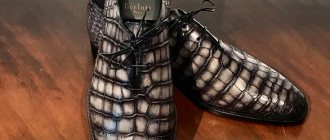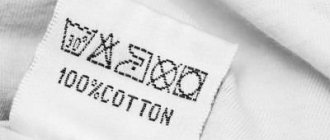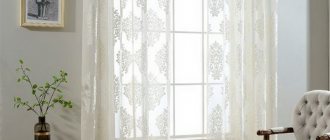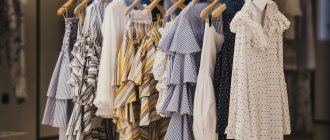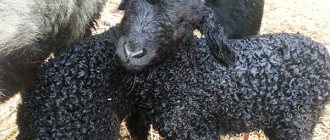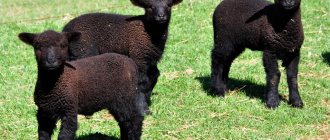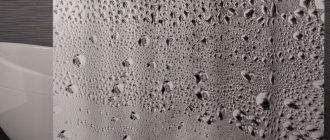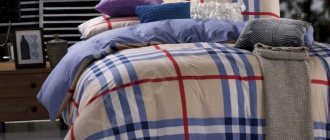Tulle is a fabric consisting of artificial threads with the addition of natural ones. It is made from silk, cotton, synthetics, and various fibers. Airy and flexible fabric is present on the windows of almost every home.
Its main characteristic feature is the ability to transmit sunlight while dispersing it, which is especially important in darkened rooms. With proper care and careful handling, curtains will last for many years.
Tulle fabric
What it is
Tulle is a type of mesh, that is, a material that contains cells of different sizes between the connected threads of the weft and warp. It got its name in honor of the French city where it was invented. Simple and colorless textiles were used for making clothes.
For your information! Previously, tulle fabric was produced only by hand; nowadays this method is used very rarely, since there are practically no specialists left with this technology.
Material for tulle
This type of material looks quite original and attracts attention, causing associations with the outfits of fairy-tale princesses. But in addition to its exceptional external beauty, the fabric has a number of practical positive properties:
- easy;
- smooth;
- breathable;
- transparent;
- undemanding in care;
- affordable.
What is quality tulle made from? In progressive production, in order to produce strong and flexible tulle material, polyamide and polyester chemical fibers are used, as well as their mixed (cotton and silk) types.
Note! The raw materials are high-twist cotton thread, nylon and polyethylene terephthalate fiber.
Produced on multi-shuttle, shuttleless and Rachelle machines with computer control.
Lambrequins
The game of contrasts looks especially elegant. When choosing a lambrequin, you should give preference to models with one or more characteristics:
- Softness.
- Rigidity.
- The presence of openwork elements.
- Combined type.
If you do not plan to install curtains on the window, use soft lambrequins. They will successfully complement the image and create an organic composition. A rigid type of accessory will add severity, while an openwork one will add softness and tenderness.
Colors and designs
Patterned curtain fabric is obtained in several ways:
- On multi-shuttle machines of three threads: the warp (located along the fabric), pattern-forming (tying) and forming the background and design. Jacquard devices are used to lay pattern-forming threads. Fabrics produced on a multi-shuttle machine have an open structure and can be made with various weaves.
- On shuttleless machines from two designs of threads: main and pattern-forming. The main thread, using special hook needles, forms loop columns, and the pattern-forming thread unites them with each other. The canvas is strong, but inferior to other types in terms of clarity, relief and complexity of the pattern.
- On looms, Rachel has reed needles in three threads: warp, weft and pattern-forming. The weft threads are laid across the width of the fabric through three loops of the chain, thereby forming square or rectangular cells. To form the pattern, a pattern-forming thread is introduced, which is placed in the warp loops parallel to the weft loops. Drawings obtained on openwork canvas usually consist of ordinary geometric shapes. When using jacquard systems, the pattern of the canvas is clearer and more complex, it can be geometric, abstract, plot, with fringe along the edge.
You might be interested in Which fabrics are best to choose for roller blinds and light curtains
How designs and colors are applied to tulle
Edge processing
The lower and possibly side edges of the tulle are hemmed with a double hem: from below/from the sides by 2 cm; on top - as much as needed according to the hanging method. They hem in 2 steps: first, make a single hem with one stitch (pos. 1 and 2 in the figure); then fold it again and sew it twice (items 3 and 4). The sleeve under the bar for hanging on the drawstring is sewn on the sides with a double seam, pos. 5. Thus, 3 seams will be visible on the right sides of the edges, and 2 on the wrong side.
Processing the edges of the tulle
You cannot stretch the fabric when stitching, as the seam will wrinkle. They let her in as freely as the machine's grab pulls. When wrinkles appear ahead (after 10-25 cm of stitching), the machine is stopped, the fabric is straightened and stitched further.
Ribbon patch
Curtain tape is purchased with a reserve of approx. 5 cm in each direction, it will be trimmed later. The cheapest 5 cm wide tape has 2 tightening threads, but it is better to take at least 3 threads, the folds will be neater. The ribbon is sewn from the inside out. The lines are drawn from 2 sides of each drawstring (red dotted lines on the left in the figure), but so as not to catch the sleeves with them (shown by blue arrows) and pockets for hooks/clips (green arrows). The sewn ribbon is cut flush with the edges of the tulle, and the folds are collected by pulling the drawstrings starting from the top (in the center). The elongated strings are tied with a knot, and the excess is cut off. If you take a 4-thread ribbon, you can get some kind of bow folds, on the right in Fig. In this case, tightening is carried out alternately from above and below. That's it, the tulle can be ironed and hung.
Curtain tape patch on tulle
Fabrics by composition
Polyamide threads are used to form smooth tulle, which is used for finishing corsetry and lingerie, embroidered patterns, capes, bedspreads, and veils. Polyamide threads give the fabric elasticity and allow you to increase the density up to 75-86 cells per 1 cm².
To make the fabric heavier and improve drapability, lead fiber can be woven into the border.
Note! Smooth facing tulle is obtained from nylon complex threads. Cotton lavsan or lavsan thread is used as a base, and viscose thread is used as a pattern-forming thread.
Tulle under a microscope
Choosing the length
Depending on the style of the living room, you can hang:
- long tulle to the floor,
- short, ending above the window sill,
- or a product of medium length.
Types of fabric and texture
What kind of tulle is there and what is made from it? This material is used to sew embroidered curtain and trim tulle, embroidered individual items, wedding and festive clothes. Tulle is supplied to fabric stores in rolls for the convenience of forming the fabric to the desired length.
Tulle mesh
Artificial and natural fibers are used for production. Often two threads run simultaneously, which increases service life. The vertical warp and horizontal weft threads are knotted or twisted together, leaving a large open area.
The network in this case can be either small and barely visible, or large knitted. When linen is used for production, the fabric looks rough.
Cheap lace curtain tulle is used for sewing curtains for windows, as well as for finishing linen and women's dresses.
Tulle mesh
Organza
The processing technique determines the appearance of the material; it can be matte or shiny. Contains 100% polyester. To make this type of fabric, the finest fibers are selected. The use of transparent, faceted threads allows the material to shine. The composition may also include silk and viscose.
Organza is available in one color, with rainbow tints or lace. The pattern is made by embroidery, perforation or printing. The thinnest and airiest material is endowed with great strength: it does not wrinkle and holds its shape perfectly. Upon contact, the fabric is pleasant, smooth and slightly cool.
Organza
Veil
Thin cotton fabric of plain weave made from cotton, wool, silk. Made using plain weave technology. The veil is denser than organza, its threads shimmer in the light, transmit the sun's rays, but have low hygroscopicity. Today, translucent types of tulle are used for sewing wedding dresses and are used everywhere as a household decorative element.
You might be interested in: Characteristics of blackout curtain and drapery fabrics
Veil
History of origin
It is not known exactly when tulle appeared in Europe. It is believed that the fabric, from which clothes were worn already in the 13th century, was invented in England. French craftsmen were ordered to produce unprecedented material by Louis XI, who ruled the country in the 15th century. The king wanted the bride's face to be hidden from prying eyes by a thin fabric that would not prevent the girl from seeing through it. The weightless material was made by hand in the town of Tulle, which gave it its name.
In the Middle Ages, tulle began to replace lace, which was not inferior in appearance, and the cost of the new fabric was lower. In the 19th century, they began to sew not only clothes from translucent material, but also curtains for windows.
How to choose tulle for different rooms
It is curtains made from tulle that turn a room into a comfortable and pleasant place. Fabric of various colors, made of linen, nylon, cotton and other fibers, can be used on the window. Even very dense tulle will freely transmit the required amount of natural light.
What is tulle like?
Using this fabric, the design of any room is formed:
- Tulle for the kitchen should be in proportional harmony with the overall design concept, and also be suitable for frequent washing. It can be smooth, lace (organza, mesh, veil), or consist of cotton and even silk threads. The material is impregnated with a special antistatic and dust-repellent composition. Fabric made from threads can be of different widths (from 5 mm). This curtain retains its beautiful original appearance for a long time, is easy to wash, and does not need ironing.
- Fabric for the living room and bedroom in subdued colors focuses attention on the main decorative details, shading them. Colorful curtains look good with plain organza or mesh. It is better not to experiment with black, heavy colors of curtains, but to opt for light material in snow-white, cream or light brown colors. If tulle acts as an independent decorative element, it is used with bright embroidery and processed with colored contrasts. Gold, brown or silver embroidery on white organza looks interesting. Airy, beautifully flowing curtains are one of the main decorations of a guest room.
Tulle for the kitchen
Important! It is considered a good solution if embroidery motifs are repeated in the decor of sofa cushions or lambrequins. With the help of tulle, it is possible to divide large rooms into areas, while the overall image will not be visually overloaded. Roman curtains look impressive, covered with organza and a veil on top.
Tulle for the living room
Application of the canvas
Curtains and capes are sewn from tulle, patterned fabric is used to zone space, to create screens and canopies. Fluffy skirts for women and girls are made from smooth fabric, which are decorated with embroidery, beads, and bugles. White tulle is used to make veils and elegant dresses for brides.
From veil, chiffon with drapery, airy evening dresses are obtained, which add the missing volume and emphasize the curves of the silhouette. Corsets are made from rigid tulle, underwear and stockings are made from openwork fabric and mesh.
Modern Tulle Design Trends
Fashion trends in home textiles are also fickle, as in clothing: what was relevant yesterday is already a thing of the past tomorrow. To add uniqueness to the interior decoration and visually increase the space, artists advise using modern fabric over tulle. Everyone knows their names:
- lace - fabrics with fancy embroidery, knots;
- prints - light fabric with a “terry” effect;
- mesh veil - elegant fabrics with figured weaving, mesh effect, “falling out” fibers;
- “linen” - with a large damask pattern;
- with weighting - with a patterned, thick printed pattern placed at the bottom of the canvas;
- chameleon - a veil with shining iridescence, intertwined with reflective and mother-of-pearl fibers;
- photo curtains - translucent with a 3D effect, roses, tulips, clouds are in fashion;
- gradient - a bright color gradually flows into a darker or brighter one. Such curtains look extraordinary both in a straight arrangement and assembled in an “hourglass” shape.
You may be interested in this Tips on what fabric to choose for a tablecloth
Modern trends in the manufacture and combination of tulle
Note! Tulle looks good with velvet, curtains made of crystal beads, and thick curtains with a damask pattern. To add luxury, compositions are made from several layers. Tiebacks, ribbons, holders, and clips are used as auxiliary decoration.
Tulle with 3D effect
Color spectrum
The Soviet-era stereotype that tulle must always be white is becoming a thing of the past. Today, designers offer to play with colors and use any tone from beige to red or even black.
In addition, the product can combine several colors and be complemented with ornaments or photo printing elements. Images on fabric are a trend in modern interiors.
With its help, you can transform the window opening and focus the attention of guests on this part of the room.
How to care
The material has almost no disadvantages, but due to its airiness and delicacy it is recommended to protect it from mechanical damage.
- How to wash. You can do it manually or in a machine, as this material is very light, but voluminous. If the tulle is not too dirty, then it is enough for it to sit for 1-2 hours so that the dust particles are washed off. The water temperature should not exceed 50°C, and the washing mode should be “No spin”.
- How to dry. The curtains are not wrung out, but are immediately hung evenly to allow the water to drain out. Under the weight of moisture, the fabric will straighten itself. To prevent creases and folds from appearing on the material, it is not recommended to hang it on a rope; it is better to immediately return them to their place.
- How to iron. Tulle is afraid of high temperatures and can become deformed and shrink. To smooth the nylon material well, it must be damp, so after washing it must be ironed immediately. Organza, on the contrary, can be ironed after it is completely steam-dried through silk fabric.
How to care for fabric
Traditional snow-white tulle will require special attention and effort. Minute contaminants are noticeable on this type of material, for this reason the requirements for such products are strict: the fabric must be wear-resistant in order to withstand frequent washing.
To preserve color, purity and quality, all types of fabric and snow-white tulle should be washed at least three times a year.
Thus, when sewing tulle, there are plenty to choose from. The main thing is to weigh all the pros and cons of each type of fabric, so that you don’t regret your choice later.
Roman curtain
There are apartments that have no curtains at all. The owners do not accept this decoration option.
How, then, can they hide from the bright sunlight and summer heat? Roman blinds or vertical blinds are installed on windows under tulle.
With this combination, the tulle should extend far from the wall so as not to interfere with the free placement of fasteners.

